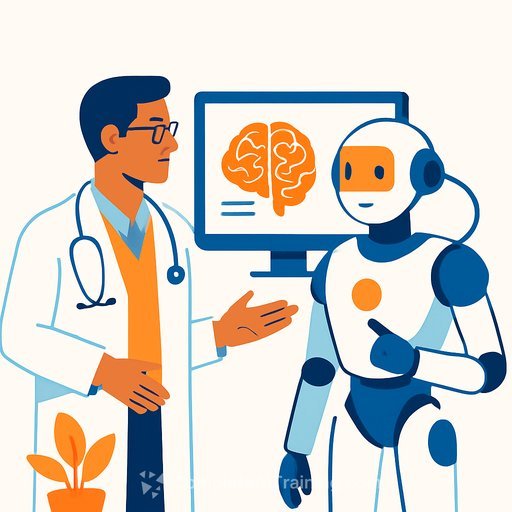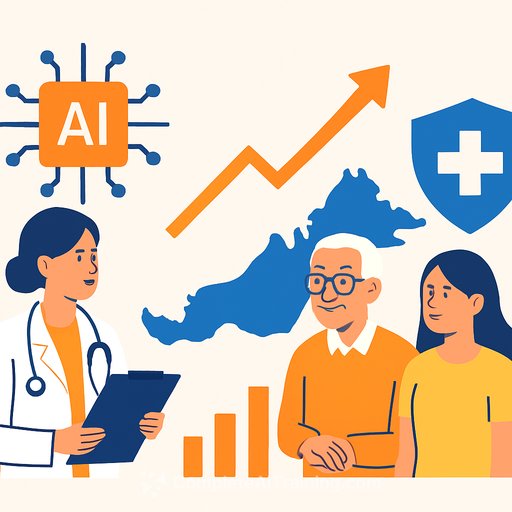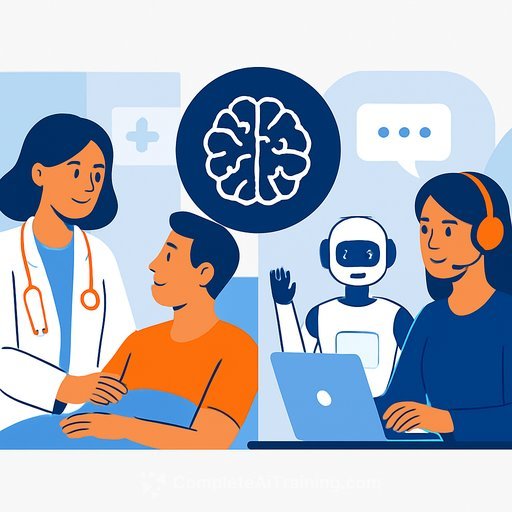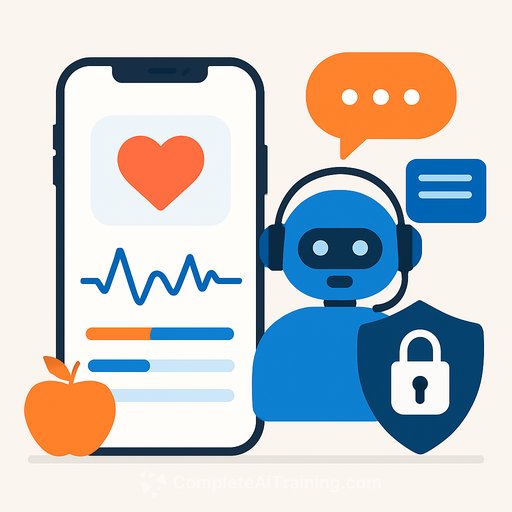8 Breakthrough Technology Trends That Will Transform Healthcare In 2026
2026 won't be about hype. It will be about outcomes: earlier detection, smoother patient journeys, fewer bottlenecks, and smarter use of scarce staff time. The tech is real, the use cases are clear, and the pressure to deliver is rising. The hard part is doing it safely, ethically, and with the human touch intact.
1) Generative AI in drug discovery
Generative models are now screening candidates, simulating ADME/tox, and prioritizing hits long before wet lab work starts. That shortens cycles and cuts costs, with more programs ready for clinical validation. The opportunity is speed; the risk is overfitting and weak evidence standards.
- Stand up a joint team (clinical, data, regulatory) to vet models and evidence thresholds.
- Build a "model dossier" for each asset: training data lineage, validation, and limits.
2) AI agents for end-to-end care
Agents go beyond chat. They can triage symptoms, book tests, pull results, send reminders, and nudge follow-up - while logging every action. In labs, they orchestrate workflows, QC steps, and inventory.
- Start with narrow, high-volume tasks (refill requests, pre-visit intake, no-show recovery).
- Require audit trails, role-based permissions, and fail-safes that hand off to humans fast.
3) From remote care to virtual hospitals
Telemedicine has grown into virtual hospitals that deliver full pathways at home or connect local facilities to distant specialists. Think virtual wards, remote monitoring kits, and daily clinical rounds over video. With aging populations and clinician shortages, this fills real gaps.
- Define clear inclusion/exclusion criteria, escalation plans, and device logistics.
- Align reimbursement, licensure, and documentation from day one. See NHS guidance on virtual wards for practical models: NHS Virtual Wards.
4) AI for medical diagnosis
AI tools are flagging breast cancer, strokes, and cardiac issues earlier and with solid clinical backing. The play isn't to replace clinicians - it's to reduce time spent reading and raise time spent with patients. Success depends on workflow integration and ongoing performance monitoring.
- Prioritize a few pathways (e.g., mammography, CT stroke) and integrate into PACS/RIS with feedback loops.
- Track sensitivity/specificity, equity metrics, and drift. Regulatory context: FDA AI/ML SaMD.
5) CRISPR × AI
AI is speeding guide design, off-target prediction, and outcome modeling for gene editing. That means safer experiments and faster iteration on therapies targeting cancer and inherited conditions. Clinical use will demand strong consent models, long-term follow-up, and precise patient selection.
- Stand up an ethics and safety board early; define off-target thresholds and monitoring.
- Map companion diagnostics and manufacturing constraints before scaling trials.
6) Quantum computing edges closer
Quantum systems are starting to handle protein dynamics and complex simulations that choke classical methods. It's early, but pilots with pharma and compute vendors hint at practical gains. Expect quantum-inspired algorithms to show value first, with true quantum acceleration to follow.
- Run low-risk pilots on protein folding or molecule scoring with vendors; compare against classical baselines.
- Invest in skills now: applied math, chem-informatics, and quantum-aware modeling.
7) Robots in real care settings
Robots are assisting in the OR, moving supplies, compounding meds, disinfecting rooms, and supporting elder care. They don't fix staffing shortages, but they do remove busywork and standardize routine tasks. The key is uptime, safety, and staff acceptance.
- Start with logistics or cleaning for quick ROI; measure turnaround time and error reduction.
- Co-design workflows with nurses and techs; require clear stop conditions and manual overrides.
8) Synthetic health data at scale
Synthetic data lets teams train and test models without risking PHI exposure. It speeds trials-in-silico and stress-tests diagnostic tools. The catch: models can drift if trained on too much synthetic data ("AI rot") or on unrealistic distributions.
- Blend real and synthetic data; label provenance; monitor performance by subgroup.
- Adopt strict privacy threat models and re-identification testing before sharing datasets.
How to make 2026 count
- Pick 3 high-impact pilots and define outcome metrics before deployment.
- Set governance: data lineage, model risk tiers, bias checks, and human override rules.
- Invest in staff training so tools improve care instead of adding friction. If you're building AI skills across clinical and operations roles, see curated options by job: Complete AI Training.
- Protect time for patients. Let tech handle the repetitive tasks; keep the empathy human.
Bottom line: Keep care quality and trust at the center, move in measured steps, and prove value with clean data and clear outcomes. Do that, and these trends will feel less like buzzwords and more like better days at the bedside.
Your membership also unlocks:






